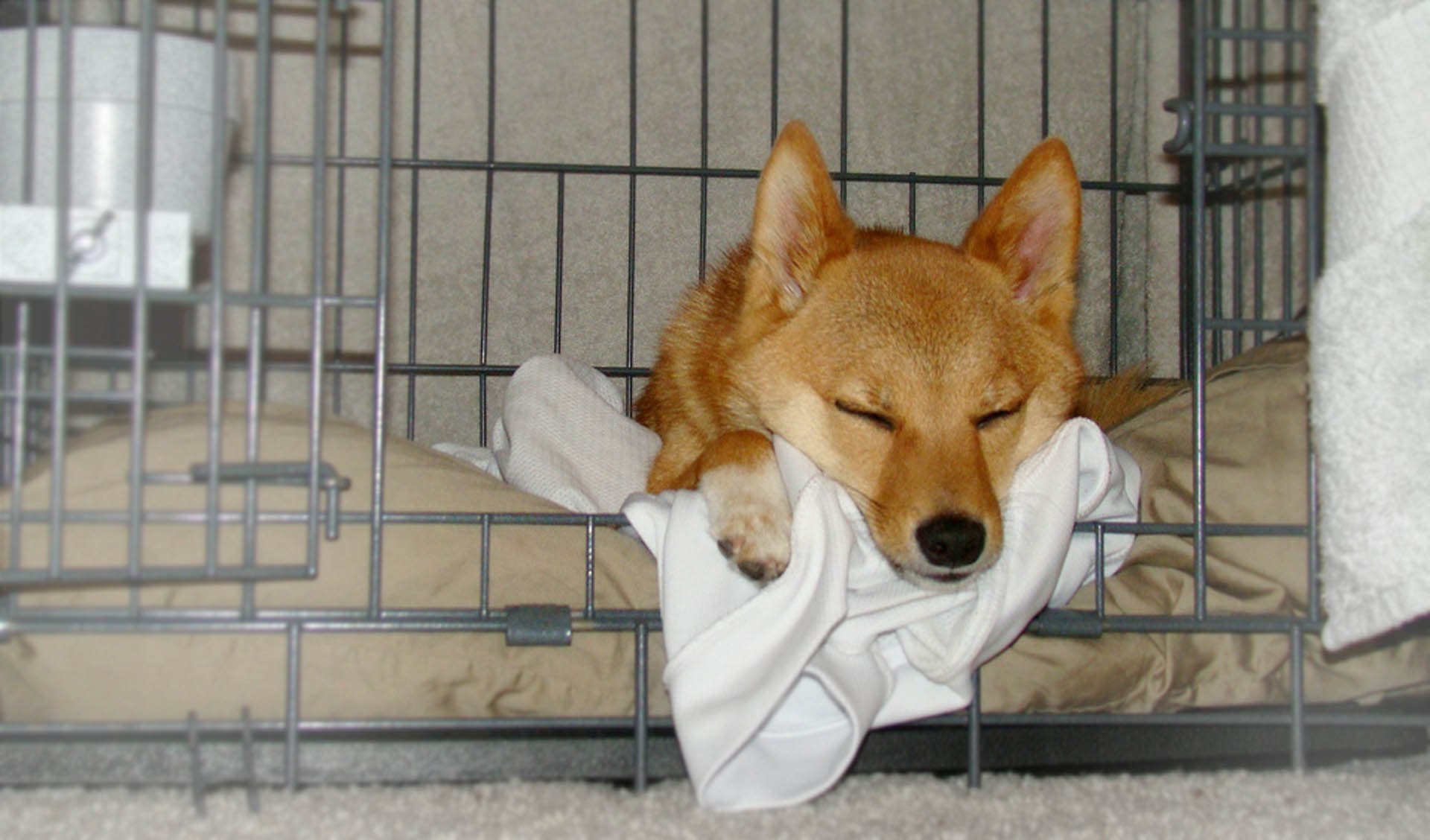Crate training is an excellent method to help train your new puppy or dog. It is most commonly used to house train a new puppy. Because dogs naturally avoid eliminating where they sleep, they will try “holding it” until they are taken out of their crate. It is also useful for keeping your dog safe when you are not home, by preventing the possibility of your dog ingesting something toxic or destroying your belongings from any destructive behaviour.
When choosing a crate for your dog, it is important to choose one in which they can comfortably stand up, lie down and stretch out, and turn around. Make sure it is not so large that they are able to sleep at one end and eliminate at the other. If you have a puppy, purchase a crate that has a divider that allows you to keep the crate small when they are a puppy and gradually expand as they grow. Place the crate in an area of your home in which you spend a lot of time, like the kitchen or living room.
When crate training your puppy, we recommend keeping your dog in the crate for 2 hours and then taking him outside to eliminate. If your puppy urinates or defecates outside, immediately offer a treat and a supervised 45 minute playtime session. If your puppy does not urinate or defecate, return him to the crate for an additional 2 hours after which you will take him out again to the “bathroom”.
Remember that puppies can only hold their bladder for a short time when very young. Dogs under 3 months should be taken outside every few hours. That can be slowly increased over the next few months. Even as adults, they should not be crated for more than 8 hours without having a chance to eliminate. As a rule, a puppy will be able to hold its urine for 1 hour more than its age in months.
If you are introducing a crate to your adult dog for the first time, take your time getting him accustomed. Place treats in the crate and let him go in on its own for a few days before attempting to close the door. Once your dog is comfortable going into the crate, try closing the door for short periods of time while you are home. If he still seems comfortable, leave the house for short periods, slowly building up the duration.
When using a crate it is important to make the experience positive. Offer your dog treats, such as “Kongs” with hidden treats. Never force your dog into their crate and do not use it as punishment. Make sure your dog is properly exercised and has had a chance to eliminate before being placed in the crate for longer durations. When returning home, do not let your dog out of the crate if he is barking, whining or overly excited. Wait until your dog is quiet and then let him out; otherwise, he will learn that barking gets him out thereby reinforcing the unwanted behaviour.
If properly introduced, the crate will become your dog’s own private space – a place he can go for some quiet time. Having the crate means your dog will always have his familiar space when travelling, which helps alleviate some of the stress of being in unfamiliar surroundings. Once your dog is house trained and no longer chews on things, it is no longer necessary to close the door on the crate; but most people still keep the crate around, as it is usually a preferred resting spot for their dog.

